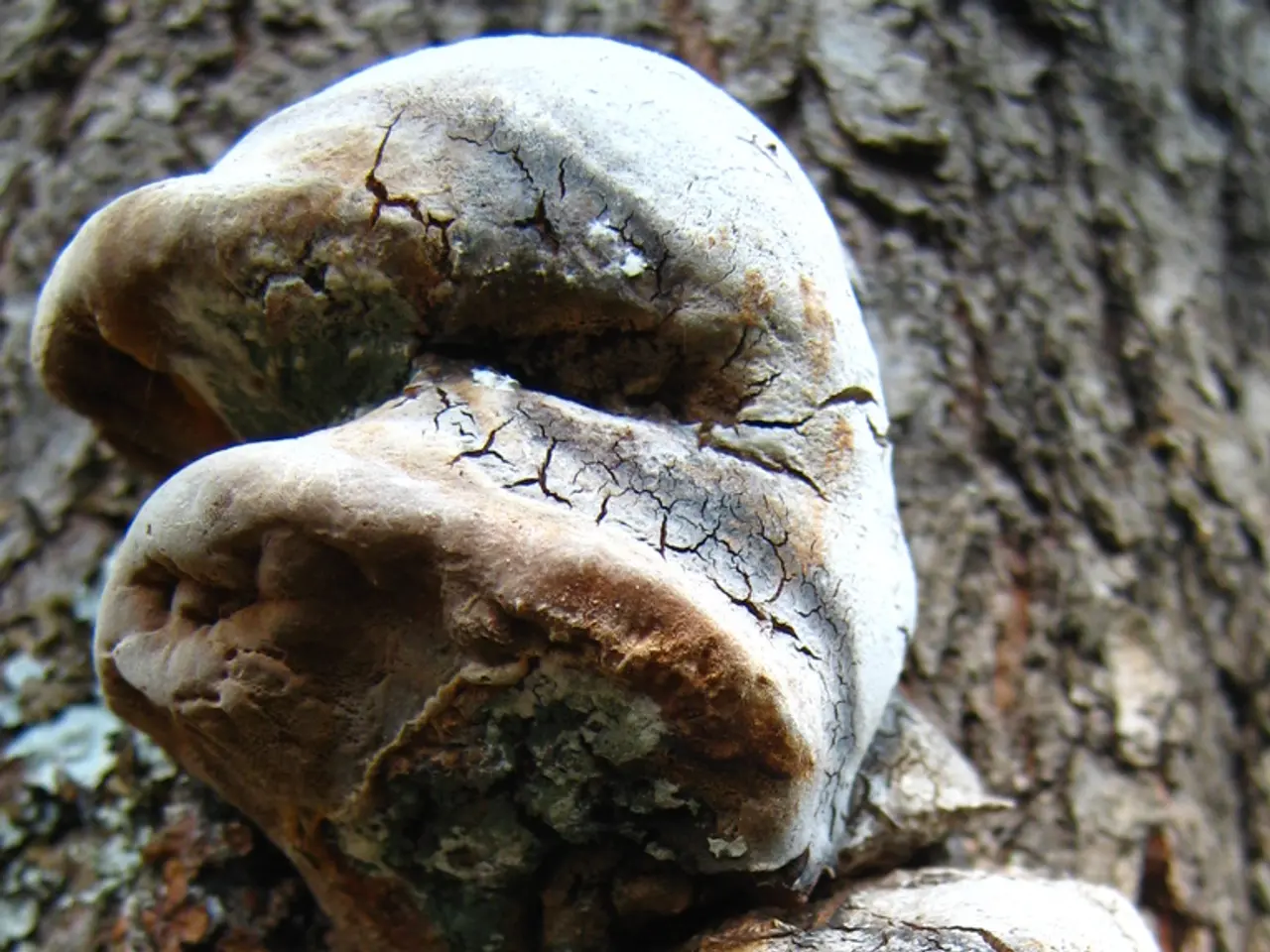Destructive Fungus Affecting Plums and Cherries, Known as Black Knot
Black knot disease is a serious concern for plum and cherry tree growers in Ohio, as most varieties, including Stanley and Damson, are susceptible to this fungal disease.
To combat black knot disease, effective control measures primarily involve cultural management practices. Pruning and removing infected branches during the dormant season is crucial to prevent fungal spread. It's important to sterilize pruning tools between cuts to avoid transmission. Maintaining tree health through proper watering and avoiding drought stress can also help trees resist infections.
In more detail, pruning out all galls (black knots) during late winter or early spring before bud break is essential to remove the fungal source. Pruned material should be disposed of by burning or burying, not composted, to prevent reinfection. Sterilized pruning tools are a must, and they can be disinfected with bleach or alcohol between cuts.
Ensuring trees are well-watered during dry periods in Ohio’s growing season is also crucial to reduce stress and improve resistance. Fungicide applications can be used as a supplementary control in commercial orchards, but specific local recommendations from Ohio State Extension should be consulted.
Despite the lack of Ohio-specific fungicide recommendations in the literature, the practices of pruning, sanitation, and proper tree care are widely supported as the best control measures for black knot in temperate regions, including Ohio.
Sweet, tart, and Mahaleb cherries are also affected but are generally less susceptible than plums or prunes. When planting new plum or prune trees, it's advisable to avoid planting them near old or abandoned orchards with a significant black knot problem.
The disease progressively worsens during each growing season and can stunt or kill the tree. Infected plant parts produce small, light-brown swellings that rupture and become covered with a velvety, olive-green growth of the fungus. In the spring, the fungus produces spores that are ejected during rainy periods and blown by wind currents, infecting succulent green twigs of the current season's growth.
Fungicides can offer significant protection against black knot, but they are unlikely to be effective if pruning and sanitation are ignored. This fact sheet was originally published in 2008.
In established orchards or backyard trees, infected twigs should be pruned out and destroyed or removed before bud break. Early Italian, Brodshaw, Fallenburg, Methley, and Milton are somewhat less susceptible than Stanley. The fungus overwinters in knots on twigs and branches or in the infected wood immediately surrounding them.
The timing of fungicide sprays should be adjusted to account for inoculum levels and weather conditions. Occasionally, apricots and peaches may also become infected. The black knot fungus mainly affects twigs, branches, and fruit spurs, but trunks may also be infected. Pruning at least 2 to 4 inches below each knot is important to ensure removal of the fungus.
American, European, and Japanese varieties of cultivated plums and prunes are susceptible to black knot. Shiro, Santa Rose, and Formosa are much less susceptible, and President is apparently resistant. For the most current fungicide recommendations and spray schedules, backyard growers should refer to Bulletin 780 and commercial growers to Bulletin 506.
By fall, the swellings turn hard, brittle, rough, and black. Remove all wild plum and cherry trees from fence rows or woodlands next to the orchard site to prevent the spread of the disease.
Incorporating pest management practices into a home-and-garden lifestyle, especially for gardening several varieties of cherries and plums, is essential to combat black knot disease, as prevention methods mainly involve pruning infected branches during the dormant season and ensuring proper tree care. Ensuring trees are well-watered, maintaining tree health, and disposing of pruned material by burning or burying, rather than composting, are key to effective pest management.




